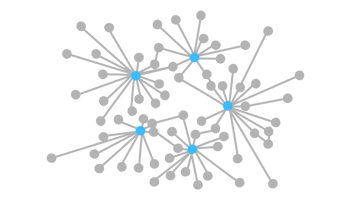Working with draft tools and resources from our Agile Organizing Kit, we have determined a number of different reasons why companies have experiments with self-organizing teams and innovative forms of (self-)management in general.
To come up with a typology of triggers for experimenting with new forms of organizing, we’ve started by identifying the WHO, WHY, and WHEN:
-
The WHO might be a role in the organization, e.g. the owner, a top manager, middle manager, frontline worker, or an external consultant.
-
The WHY is the reason that gets different roles to explore radical experiments in the field of management.
-
The WHEN of the experiment would be the situational patterns that make experiments plausible, for example when transitions unexpectedly open windows of opportunities to try something new.
We suspect that certain combinations of WHO, WHY, and WHEN are more common than others, which results in typical triggers. But we’re happy discuss this if you’ve got other ideas! (Feel free to send us an e-mail: info@managementkits.com).
The first trigger: intrapreneurs within the organization want to get stuff done and decide to explore new ways to work around silos, middle management, and slow decision-making
We’ve seen several cases where the push to experiment with new forms of organizing came from within the organization, with intrapreneurs (the WHO) taking the lead in trying something new.
In most cases, their primary interest (the WHY) was not new forms of organizing, per se. Rather, the motivation was the frustration that their projects and initiatives (the WHEN) did not move forward fast enough. They couldn’t access the knowledge and resources they needed, and they didn’t get the decisions they wanted.
In one case, an innovative product development initiative requiring sophisticated development work, both in terms of hardware and software, struggled because key capabilities sat in different silos of the corporate structure. The key impediment to success was not technical but organizational. The team couldn’t wait for a traditional reorganization. Their natural inclination was to demand the autonomy and means to build a structure that would fit the requirements of the job.
By the way, I would suspect that the experiences that gave rise to the original agile manifesto would fit that type of trigger (but I’ll save that hypothesis for another post).
The second trigger: leaders at the top of an organization demand and support experiments based on functional or strategic considerations (speed, innovativeness, human capital)
In contrast to middle managers or project managers seeking to get stuff done, there are some instances where senior leaders (the WHO) demand and support organizational experiments. Their motivation (the WHY) results from strategic issues and functional questions on a systemic level (one could say that it is a systemic aggregation of observations like the first type of trigger discussed above).
In response, senior leaders push decision-making authority down the chain of command; ask their Organization Development function for a vision of the organization; seek to free up capacity on their leadership levels to plan and control less and ideate more; and institutionalize “hard empowerment” (an approach to empowerment not contingent upon the leadership skills of middle managers) to leave operations to frontline people.
The overall goals are to overcome strategic deadlocks (the WHEN), get faster (e.g. reduce time to market), and make full use of their organization’s capabilities and master industry challenges.
The third trigger: staff at any level are attracted to innovative organizational forms based on ethical, or even spiritual, considerations
Some people, independent of their institutional roles, are drawn to new management ideas based on ethical, or even spiritual, considerations.
While strategic and functional quarrels (and their repeated encounters) may play a role, they conclude that above all it’s fundamentally wrong to work within dysfunctional corporate structures, which are largely unresponsive to the values and spiritual ambitions of their members.
These individuals seek to make the workplace a place worth being beyond the paycheck, and demand a value-based conversation about an organization’s purpose. People who refer to this trigger, in my experience, often feel attracted to the language and thinking of Frederic Laloux, his bestselling book Reinventing Organizations, and his idea of “teal organizations” as embodiments of some higher form of human consciousness. But of course, dissatisfaction with the modern workplace obviously gives ample cause to be critical based on ethical grounds.
This is a sketch of a typology. The three triggers cited above can coincide in many different ways and contexts. And I would suspect that the most significant cases show elements of all three types of triggers, with strategic, intrapreneurial, and ethical considerations present for actors/change agents across the organization.
Learn more about Management Kits resources and tools to enable new forms of organizing.



